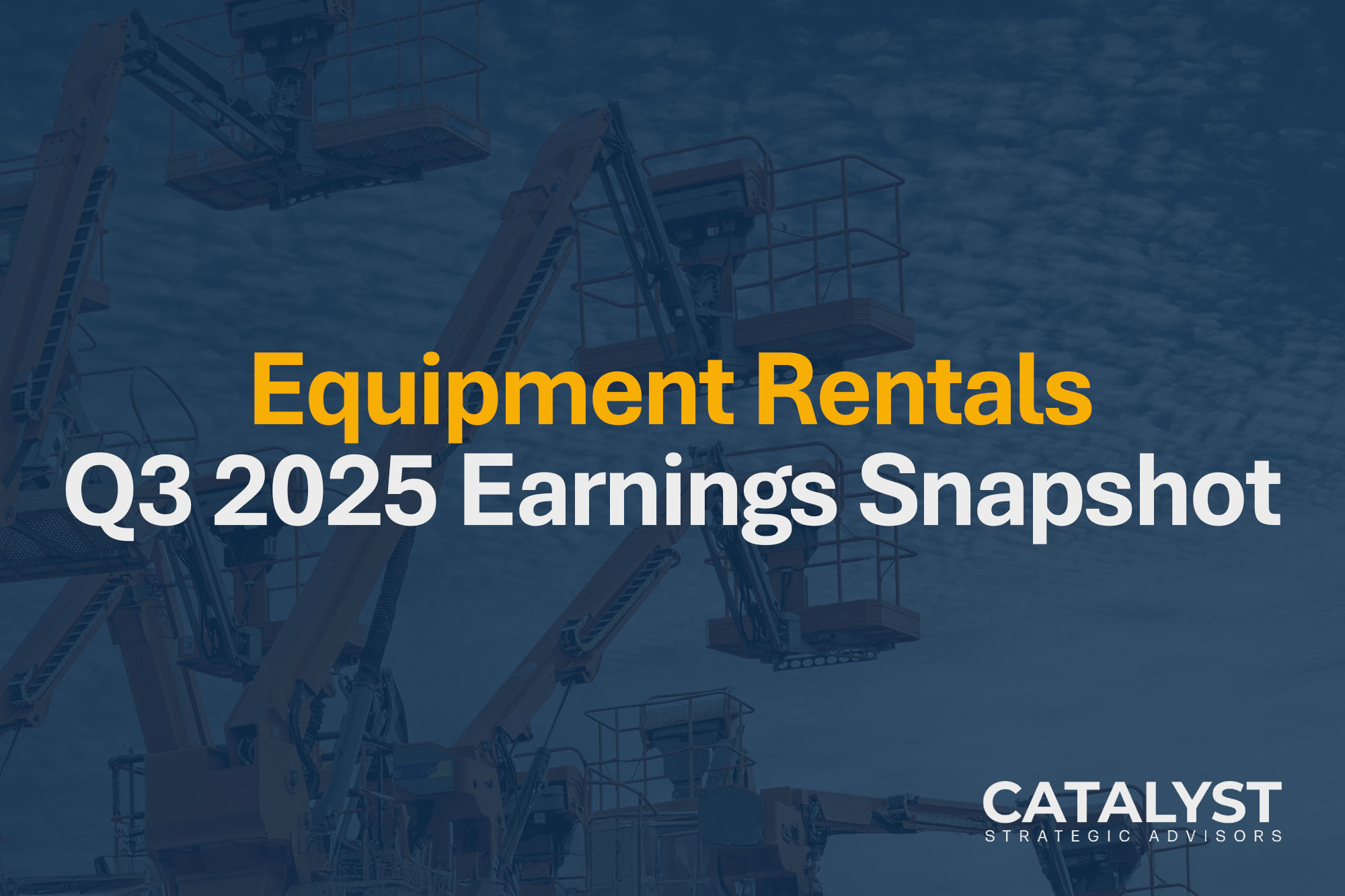The third quarter of 2025 highlighted steady demand and resilient performance across the large national equipment rental companies. Mega projects and infrastructure development remained key growth drivers, supported by ongoing investment in data centers, hospitals, airports, and semiconductor facilities. Specialty rental continued to outperform general rental, while the companies focused on optimizing fleet mix and profitability amid persistent margin pressure.
Sector Takeaways
- Large project activity and infrastructure spending remain the dominant tailwinds driving fleet deployment and capital allocation
- Specialty rental growth continues to accelerate, particularly in HVAC, power, and other high-demand applications
- Margin pressure remains a focus as companies balance growth initiatives with disciplined cost management
- Strategic integrations and technology-enabled efficiencies support long-term positioning and network optimization
United Rentals (NYSE: URI)
United Rentals reported record revenue and EBITDA, with rental revenue up 6% year over year and specialty rental up 11%. Fleet productivity improved 2%, and the company added 18 specialty cold starts during the quarter. Capital expenditures reached $1.5 billion in Q3, with full-year guidance raised to $4 billion to meet stronger-than-expected demand. Specialty strength was led by the power segment and large-scale projects requiring both general and specialty fleets. The company returned $730 million to shareholders through buybacks and dividends. Net leverage remained below 1.9x, providing flexibility for future M&A. United Rentals’ continued fleet expansion and specialty growth position it well to capture ongoing infrastructure-driven demand.
Sunbelt Rentals North America (Ashtead Group: LSE: AHT)
Sunbelt reported revenue growth of 2% year over year, driven by a 5% increase in its specialty segment. General tool growth remained relatively flat at approximately 1%, reflecting continued softness in local non-residential construction. Specialty strength was led by HVAC and power, although margins were impacted by higher internal repair costs and ongoing fleet repositioning. The company’s mega project pipeline remains robust, with 832 active projects and a projected $1.4 trillion in total value by 2026. Free cash flow tripled year over year to $500 million. Capital allocation during the quarter included 10 greenfield openings, $330 million in share repurchases, and continued investment in an active M&A pipeline. Despite margin compression, Sunbelt remains confident in its long-term growth trajectory, supported by infrastructure demand and upcoming LA28 Olympic Games-related projects.
Herc Rentals (NYSE: HRI)
Herc reported 30% rental revenue growth and 24% EBITDA growth compared to Q3 2024, driven primarily by the acquisition of H&E Equipment. Margins were temporarily affected by integration-related costs, although the company completed full IT and systems integration ahead of schedule. Specialty equipment now accounts for 17% of original equipment cost (OEC), with plans to open 50 additional specialty branches. While local market demand remains soft, large-scale infrastructure and industrial projects continue to provide a strong foundation for growth.
Looking Ahead
Mega projects remain the primary growth driver across the rental industry. As 2025 draws to a close and 2026 approaches, attention will center on project awards, fleet deployment strategies, and capital expenditure adjustments. Specialty rental continues to serve as a key growth lever, supported by aggressive expansion through cold starts and branch conversions. Margin compression persists as a focus area, making operational efficiency and product alignment around large-scale projects increasingly important to sustain profitability.



